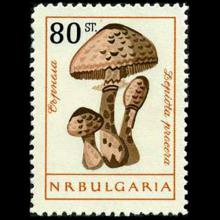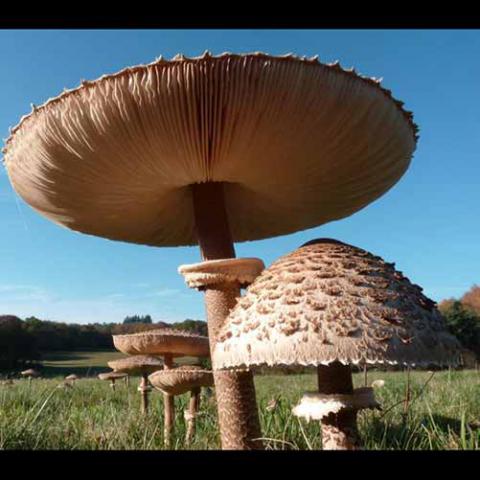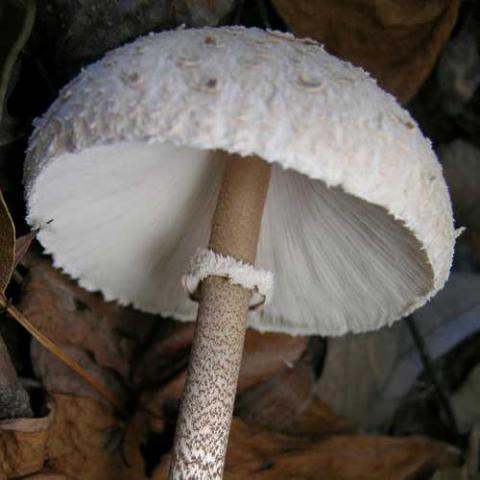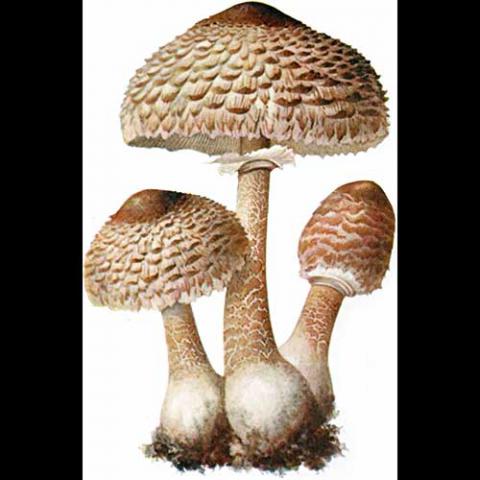NAMES
TAXONOMY
FUNGI ID
THERAPEUTIC
Bulgaria
Issued:
Stamp:
Macrolepiota procera
Bulgaria
Issued:
Stamp:
Macrolepiota procera
Bulgaria
Issued:
Stamp:
Macrolepiota procera
Mushroom magic: Landscapes, Waterscapes, and Flora Finalist.
Alan Taylor, MAY 11, 2020
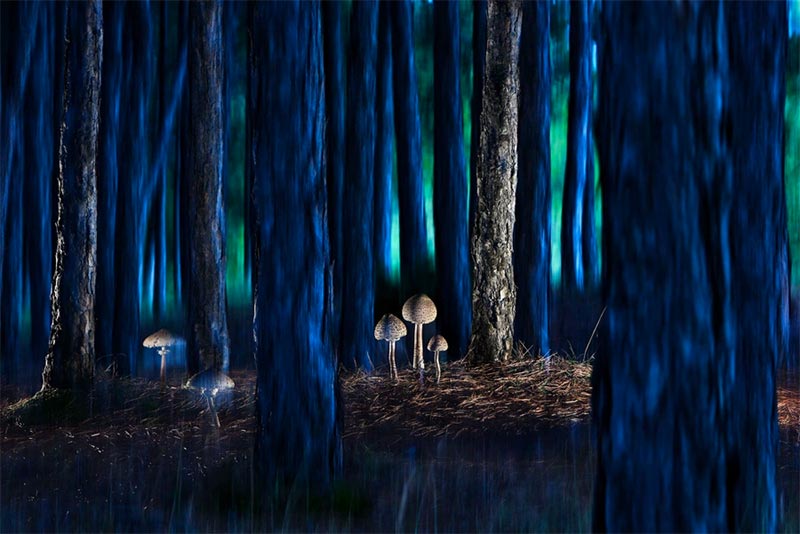
Despite the ethereal appearance of this photo, these edible mushrooms (Macrolepiota procera) won’t induce any hallucinations. But that doesn’t mean they aren’t magical. Indeed, the more we learn about mushrooms, the more magic they seem to harbor. From helping trees communicate to producing cancer-fighting metabolites, scientists have only begun to uncover the fantastic features of fungi.
Genus species (Fungi): Macrolepiota procera
Macrolepiota procera, the parasol mushroom, is a basidiomycete fungus with a large, prominent fruiting body resembling a parasol. It is a fairly common species on well-drained soils. It is found solitary or in groups and fairy rings in pastures and occasionally in woodland. Globally, it is widespread in temperate regions.
Description
The height and cap diameter of a mature specimen may both reach 30 - 40 (50) cm. The stipe is relatively thin and reaches full height before the cap has expanded. The stipe is very fibrous in texture which renders it inedible. The surface is characteristically wrapped in a snakeskin-like pattern of scaly growths (therefore, known in some parts of Europe as the "snake's hat" or "snake's sponge"). The immature cap is compact and egg-shaped, with the cap margin around the stipe, sealing a chamber inside the cap. As it matures, the margin breaks off, leaving a fleshy, movable ring around the stipe. At full maturity, the cap is more or less flat, with a chocolate-brown umbo in the centre that is leathery to touch. Dark and cap-coloured flakes remain on the upper surface of the cap and can be removed easily. The gills are crowded, free, and white with a pale pink tinge sometimes present. The spore print is white. It has a pleasant nutty smell. When sliced, the white flesh may turn a pale pink.
Uses
This edible mushroom is a very sought-after and popular fungus in Europe, due in part to its large size, seasonal frequency and versatility in the kitchen. In the UK, it may be found from July through to November.
The parasol mushroom is difficult to mistake for any other, especially in regions like Europe where the poisonous look-alike Chlorophyllum molybdites is rare. Nevertheless, as with picking any fungus for consumption, caution should be exercised at all times.
Macrolepiota procera is also edible raw, though its close lookalikes in the genus Chlorophyllum are toxic raw.
These mushrooms are popularly sauteed in melted butter. In central and eastern European countries this mushroom is usually prepared similarly to a cutlet. It is usually run through egg and breadcrumbs and then fried in a pan with some oil or butter. A savory Slovak recipe is to bake caps stuffed with ground pork, oregano, and garlic. Italians and Austrians also serve the young, still spherical caps stuffed with seasoned minced beef, baked in the same manner as stuffed peppers.
Reference: Wikipedia
Photo: Albin Schmalfuß, Michael Kuo
Illustration: Wikipedia

